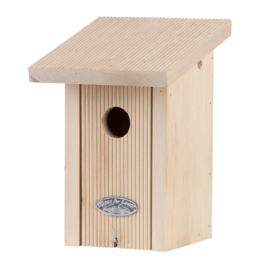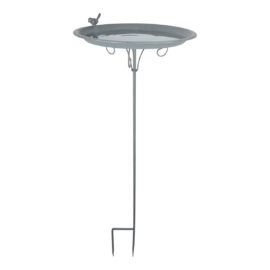Control the processionary caterpillar with natural enemies
Tuesday, March 15, 2022
Just when we can enjoy the beautiful weather outside again, it is time to watch out for the nasty stinging hairs of the oak processionary caterpillar. The hairs of the caterpillar cause skin and respiratory tract complaints and irritations. We really don't want that, so let’s better be safe than sorry.

Control the processionary caterpillar
The oak processionary caterpillar is mainly found in oaks in parks and forests, but also in the garden. Fighting the oak processionary caterpillar starts by creating an attractive habitat for all kinds of animals. This allows the natural predator, which is attracted to the favourable habitat, to spot the processionary caterpillar sooner and eat the caterpillars in time.

Natural enemies
The processionary caterpillar, incidentally, attracts a variety of enemies in its various stages. The wren, the robin, the blue tit and the grasshopper mainly feed on the eggs and the larvae are often eaten by the great tit, the tree sparrow and the nuthatch. The young caterpillars are also on the menu of ladybugs and the larvae of wasps. The moth that hatches from the caterpillar in September is again a favorite of bats. One bat can eat up to 100 moths per night, which saves thousands of processionary caterpillar eggs in the long run.
In a handy overview
Life stage Caterpillar |
Period |
Nuisance |
Eggs just laid |
August and September |
Average (hairs in empty nests) |
Eggs |
Early October to mid-April |
Usually very limited |
Young caterpillars |
Early April to mid-May |
Usually very limited |
Caterpillars with stinging hairs |
Early June to mid-July |
High (shedding stinging hairs) |
Pupae |
Early July to mid-August |
High (plenty of hairs in nests) |
Butterfly |
Late July to late September |
Average (hairs in empty nests) |
Bron: zorgwijzer.nl/zorgwijzers/processierups

What can you do?
Help your customer attract natural enemies in order to prevent and remedy the spread of nasty critters. For example, by sowing attractive flower mixtures, a flower-rich environment provides a place where insects, birds and bats feel at home. Nesting boxes give birds and insects that eat the caterpillar a place to hide. A bird - or bee - pool, also increases biodiversity and makes the living conditions even more favorable for natural pest controllers.
Several useful shelf plans with header cards and POS materials are available for our new and various lines of hives, such as the ones below. Please inquire with your account manager or our customer service department.

Nesting boxes for birds
Nesting boxes for ladybugs and bats

Bat box silhouette S


Bat Box
Useful for making a more attractive habitat

















